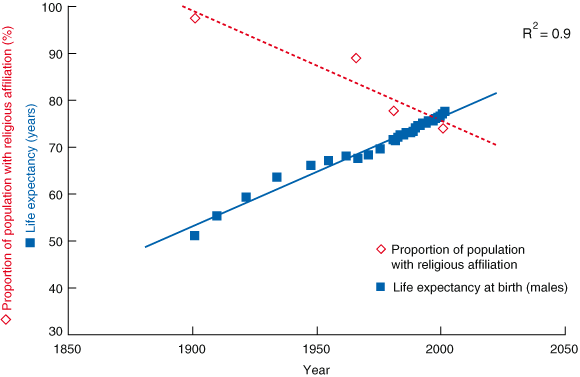To the Editor: I read with interest the recent MJA supplement on spirituality and health. It is interesting to observe the relationship between religious affiliation and life expectancy at birth over the past 100 years using population data supplied by the Australian Bureau of Statistics (Box).1,2 The life expectancy data shown here is for males, but the graph is almost identical for females. While there are many variables in this relationship, they are akin to those chiefly neglected in most of the articles in the supplement. It is easy to see from the graph that, as religious affiliation within the community has declined, life expectancy (a gross surrogate measure of health) has increased. The correlation is very good.
Advertisement
Religious affiliation and life expectancy at birth
Med J Aust 2007; 187 (7): 423. || doi: 10.5694/j.1326-5377.2007.tb01323.x
Published online: 1 October 2007
Published online: 1 October 2007
Online responses are no longer available. Please refer to our instructions for authors page for more information.
Advertisement





